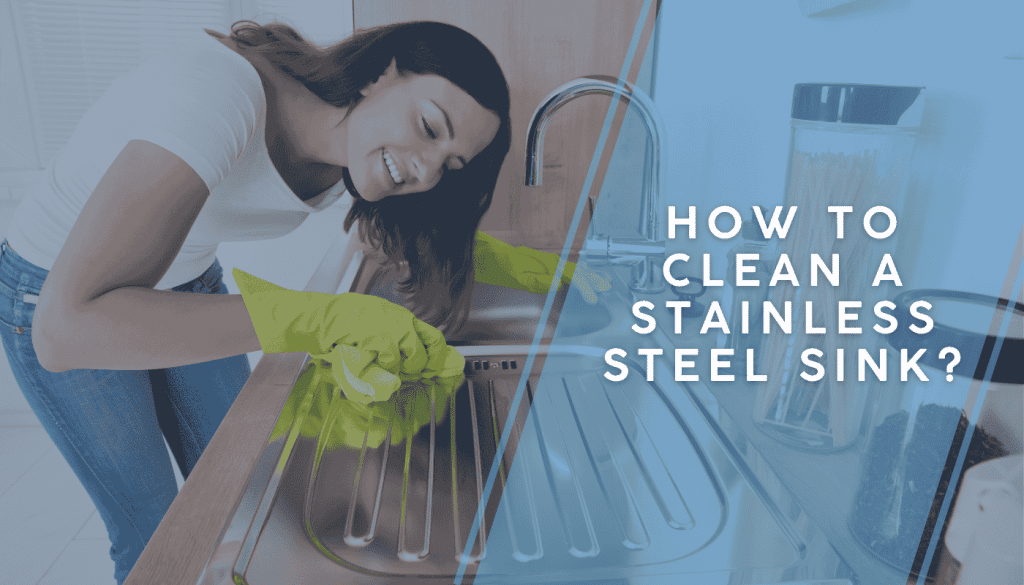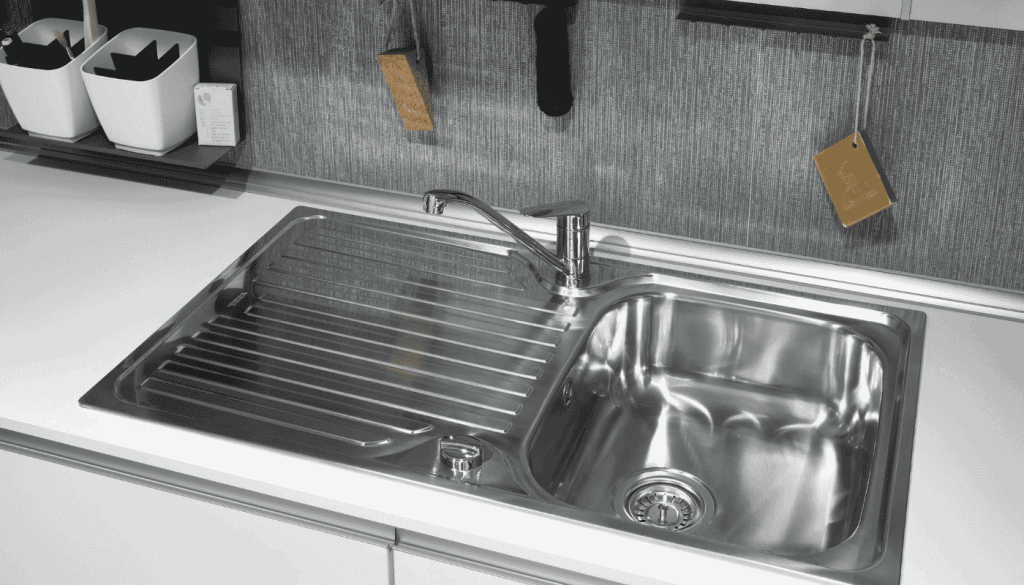
How to Clean a Stainless Steel Sink Like a Pro? Must-Know Steps for Lasting Shine!
Stainless steel sinks are a favorite in many Washington homes for good reason. They’re sleek, strong, and resistant to heat and stains. However, without proper upkeep, even the toughest stainless steel can become dull, scratched, or discolored. If you’re wondering how to clean a stainless steel sink, this expert guide is all you need.
At Barney’s Plumbing & Sewer Services, we know that a clean kitchen starts at the sink. In this detailed blog, you’ll learn step-by-step cleaning routines, smart stain removal tricks, and maintenance strategies to keep your sink looking brand new. Follow these methods if you want to understand how to clean a stainless steel sink safely and effectively.
Why Stainless Steel Sinks Need Special Care
Despite being known for their strength and clean appearance, stainless steel sinks are still vulnerable to:
- Scratches from abrasive tools
- Discoloration caused by acidic foods or hard water
- Rust spots when metal objects sit on a wet surface for too long
Stainless steel has a protective chromium layer that resists corrosion, but it can wear down when exposed to harsh cleaners, standing water, or poor maintenance. Over time, you may notice cloudy patches, water spots, or even pitting. That’s why consistent and proper sink care is essential. Knowing how to clean a stainless steel sink helps prevent damage and extends its life.
Supplies You’ll Need to Clean a Stainless Steel Sink
Having the right tools is the first step to cleaning efficiently. Here’s what you should gather:
- Baking soda – A gentle abrasive that lifts grime without scratching
- White vinegar – Removes mineral deposits and adds shine
- Dish soap – Cuts through grease and food particles
- Soft cloth or microfiber towel – Perfect for drying and polishing
- Non-abrasive sponge – Safe scrubbing without causing scratches
- Lemon – Natural deodorizer and acid for tough spots
- Optional: Club soda (restores shine), olive oil (adds luster), Bar Keepers Friend (tough stain removal)
Each item plays a specific role. Avoid swapping them with harsher alternatives, as this could damage the stainless steel surface.
How to Clean a Stainless Steel Sink: Step-by-Step
Step 1 – Daily Cleaning Routine
Regular maintenance keeps your sink from accumulating grime. Each day:
- Rinse out leftover food and debris
- Add dish soap to a soft sponge and clean the surface thoroughly
- Rinse with warm water
- Wipe it dry using a microfiber cloth to prevent water spots
These small actions can preserve your stainless steel sink’s shine and prevent grime buildup. Understanding how to clean a stainless steel sink daily saves time in the long run.
Step 2 – Weekly Deep Clean
Once a week, give your sink a more thorough clean:
- Empty your sink completely before starting
- Sprinkle baking soda all over the wet surface
- Scrub gently using a sponge, following the direction of the steel grain
- Spray vinegar onto the baking soda to create a fizzing reaction
- Let it sit for 1–2 minutes, then rinse with warm water
This deep clean method targets stubborn buildup and lingering odors. It’s one of the most effective steps when learning how to clean a stainless steel sink thoroughly.
Step 3 – Remove Water Spots and Discoloration
Mineral-rich water often leaves behind cloudy marks. Here’s how to remove them:
- Soak a paper towel or soft cloth in vinegar
- Lay it over the stained area and leave it for 10–15 minutes
- Rinse thoroughly
- Rub lemon directly on hard water spots for extra strength
Dry the sink completely using a clean microfiber cloth.
Step 4 – Final Polish for Shine
To restore a smooth, gleaming finish:
- Dry the entire kitchen sink with a soft cloth
- Apply a few drops of olive oil or club soda to a microfiber cloth
- Buff the stainless steel sink in circular motions
- Focus on edges and corners for an even shine
Polishing adds a subtle layer of protection and prevents new stains from setting in.
How to Remove Tough Stains and Rust Spots
Some stains don’t budge with everyday cleaning. These usually come from:
- Cast iron pans or metal cans left in the sink
- High-mineral water supply
- Food particles or acidic spills left overnight
For effective removal:
- Mix baking soda and white vinegar into a thick paste
- Apply it to the stained spot
- Let it sit for 15–20 minutes
- Scrub in the direction of the grain with a non-abrasive sponge
- Rinse with water and dry
Bar Keepers Friend is a recommended cleaner for stubborn rust marks. Apply gently and rinse thoroughly to avoid residue. Knowing how to clean a stainless steel sink properly includes addressing these common stain issues.
Stainless Steel Sink Maintenance Tips
To ensure long-term results:
- Never use steel wool or abrasive pads
- Don’t leave wet cloths or sponges in the sink
- Rinse after every use to remove food and dish residue
- Dry after cleaning to avoid streaks and water spots
- Check faucet connections to ensure no mineral build-up leaks down
Even simple daily routines keep stainless steel sinks in excellent condition. Anyone looking for how to clean a stainless steel sink with minimal effort should focus on these habits.
Natural vs. Commercial Cleaners: What’s Safe to Use?
When it comes to cleaning products, both natural and commercial cleaners have their place:
Natural cleaners:
- Baking soda, lemon, and vinegar are safe and effective
- They work well for routine sink care and deodorizing
Commercial products:
- Choose a recommended cleaner formulated for stainless steel
- Avoid anything containing chlorine or harsh acids
Using safe products extends the life of your kitchen sink while keeping your environment healthy. Another key tip when exploring how to clean a stainless steel sink is to match the cleaner with the job at hand.
What to Avoid When Cleaning a Stainless Steel Sink
Even well-intended cleaning efforts can cause damage if done incorrectly. Avoid:
- Chlorine bleach
- Harsh acids or abrasive scrubbers
- Leaving salt or acidic food residue overnight
- Steel brushes or scouring pads
- Ignoring the direction of the sink’s grain during scrubbing
Following these guidelines ensures that your stainless steel sink won’t lose its natural finish over time. This advice is essential for anyone asking how to clean a stainless steel sink without damaging it.
Seasonal or Monthly Deep Clean Routine
Deep cleaning once a month provides extra care that daily maintenance may overlook:
- Empty your sink and remove any accessories
- Use a toothbrush to scrub around faucets and drain edges
- Apply a lemon and baking soda paste across the entire surface
- Let it sit 10–15 minutes
- Rinse with warm water and polish with a microfiber cloth
This monthly habit is a core part of any long-term approach to how to clean a stainless steel sink effectively.
How to Keep the Sink Smelling Fresh
If your kitchen sink starts to smell, it’s usually a sign of trapped food or grime in the drain. Freshen it up by:
- Pouring boiling water followed by baking soda and vinegar into the drain
- Using lemon juice or club soda as a natural deodorizer
- Cleaning the drain cover or strainer regularly
These techniques work well between professional drain cleanings and support your overall sink hygiene goals.
Why Professional Drain and Sink Cleaning Matters
Sometimes a clean surface isn’t enough. If your sink continues to smell, drain slowly, or clog, it’s time for a professional inspection.
Professional cleaning removes deep-seated grease, food debris, and mineral buildup. It also helps detect leaks or corrosion early, protecting your home’s plumbing system.
Don’t wait until problems escalate—routine drain services from a licensed plumber can save you from expensive repairs later. Combine expert help with what you know about how to clean a stainless steel sink for optimal results.
Additional Tips for Longevity
- Rinse the kitchen sink thoroughly after cooking acidic dishes
- Use sink grids to minimize direct scratching from pots or pans
- Keep faucets dry and clean to prevent lime scale
- Avoid storing bleach-based products under the sink where fumes might rise
Every action, even minor, helps maintain the beauty and performance of your stainless steel sink. These are often overlooked in general advice on how to clean a stainless steel sink.
Cleaning Schedule Table
| Task | Frequency | Tools Needed |
|---|---|---|
| Rinse and wipe down | Daily | Dish soap, sponge, microfiber |
| Deep baking soda scrub | Weekly | Baking soda, vinegar, sponge |
| Remove discoloration | Weekly | Vinegar, lemon |
| Final polish | Weekly | Olive oil or club soda, cloth |
| Drain deodorizing | Monthly | Baking soda, vinegar, lemon |
| Faucet/seam deep clean | Monthly | Toothbrush, dish soap, vinegar |
Quick Checklist: 5 Things to Avoid on Stainless Steel
- Steel wool or scouring pads
- Chlorine bleach
- Leaving wet items in the sink
- Hard water deposits left uncleaned
- Scrubbing against the grain
Frequently Asked Questions About Cleaning Stainless Steel Sinks
What is the best way to clean a stainless steel sink?
- Use baking soda and vinegar for deep cleaning, followed by polishing with olive oil or club soda for shine.
Can I use lemon to clean my stainless steel sink?
- Yes, lemon is effective for removing odors and mild stains. Rub it directly on the surface and rinse well.
How do I keep water spots off my sink?
- Dry the sink with a microfiber cloth after each use to prevent mineral deposits from forming.
What should I avoid using on a stainless steel sink?
- Avoid steel wool, bleach, and harsh chemicals. These can scratch or corrode the sink surface.
How often should I deep clean my stainless steel sink?
- Once a week is recommended for deep cleaning to keep the sink in top condition

Contact Barney’s Plumbing & Sewer Services
Barney’s Plumbing & Sewer Services is proud to serve homes and businesses throughout King and Pierce Counties with professional plumbing solutions. Whether you’re dealing with a clogged drain, planning a kitchen upgrade, or just need expert maintenance, we’re your local plumbing team.
Our experienced technicians deliver honest, safe, and timely service with every visit. We use modern equipment and follow all safety protocols to protect your home and your time.
Call us today at (253) 498-5434 for a free quote or to schedule an appointment. Ask about our military and senior discounts.
Areas We Serve: Bonney Lake, Tacoma, Auburn, Kent, Bellevue, Seattle, Puyallup, Sumner, and surrounding communities.
Barney’s Plumbing & Sewer Services – Your Reliable Washington Plumber
Trusted by families and businesses for over 20 years.

